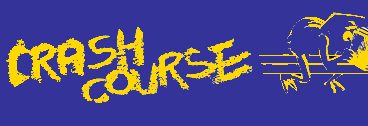

Welcome to the first CRASH Course of 1986. This is an appropriate time for looking back over the events of the old year as well as making wishes for the new. 1985 saw a tremendous upsurge in the number of commercially available educational programs, particularly for use with younger children. Most educational publishers have now linked software with their own reading schemes (for instance, the Sinclair/MacMillan programs reviewed below), and, of course, this is the ideal way forward.
It is also good to see that some software houses are including audio tapes in their packages, and I hope this is a development we'll see more of in 1986. Older children, however, especially the 12 plus age group, are still not being particularly well catered for, and what is needed is for secondary teachers and publishers to get together to design programs with a high degree of educational relevance. Unfortunately, the industrial action by teachers throughout Britain in 1985 has done much to bring to a halt the development of new ideas in computer-based learning. Let's hope that 1986 will see more creativity in software and a move away from the kinds of application which tend to trivialise the potential of both the computer and the child.
Another hope for 1986 regards the increased availability of educational software in the high street stores. With the creation of the British Educational Software Associates at the end of last year, it is to be hoped that their aim of improving software distribution both to the home and school market will be realised, and that the service I mentioned in last issue will be extended during this year.
The past few years have been a period of experimentation in the field of computer-assisted learning. Now is the time for us to expand upon the good ideas that have emerged, with a view to providing a much better range of educational software in the future.